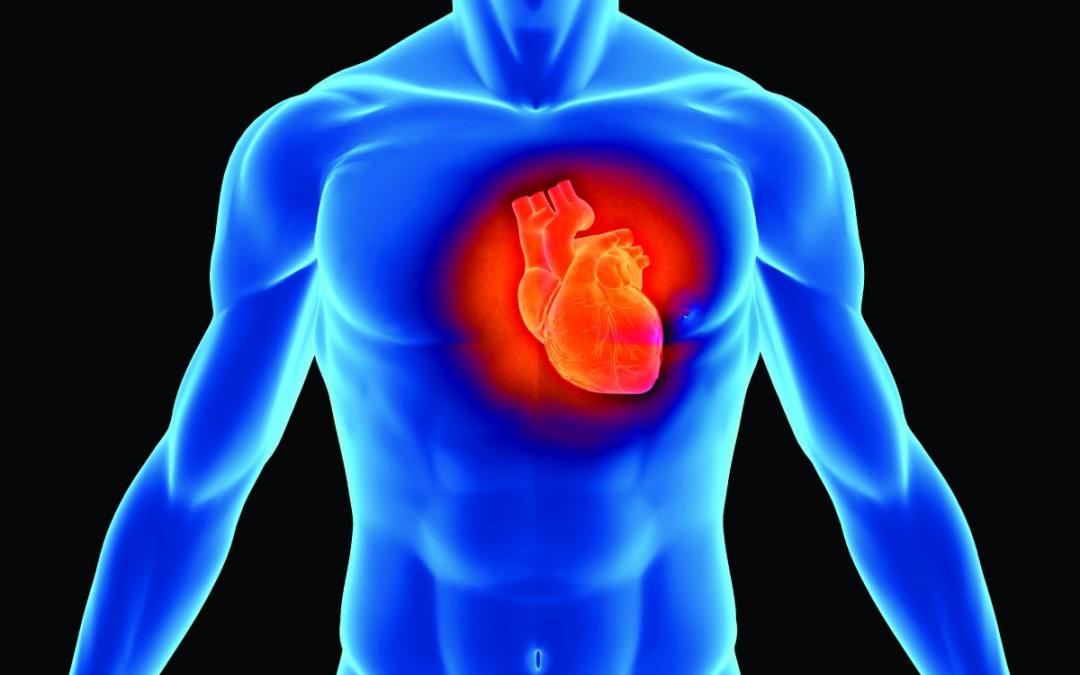For American Heart Month, increase your heart knowledge with insights into how exercise impacts your ticker, how to measure fitness through heart rate, and top cardio concerns that trainers should know about.
• Each heartbeat starts in a group of specialized cells called the sinoatrial node (SA node) in the heart’s upper right chamber. The SA node serves as a pacemaker: It triggers electrical impulses that squeeze that chamber of the heart slightly earlier than the rest of the heart, forcing blood into the lower chambers for each beat. This is why your doctor might refer to normal heart rhythm as “normal sinus rhythm.”
• When you exercise, your muscles require more oxygen and nutrients, at a quicker rate, to fuel contractions. The natural response: Your heart beats faster to deliver more blood. In addition, the arterioles (smaller blood vessels leading to capillaries) serving the exercising muscles dilate to accommodate the increased flow. As these vessels open, other arterioles constrict in less active parts of your body, including your digestive system, skin, and the skeletal muscles you’re not using.
• Exercise makes your heart stronger. A stronger heart pumps blood more easily throughout this entire process, keeping blood pressure healthy or reducing blood pressure that’s too high. It can also improve circulation, lower heart disease risk, improve blood cholesterol levels, and lower resting heart rate.
IS A LARGE HEART A PROBLEM?
“Enlarged heart” usually refers to a weak heart in heart failure, often in an older adult. But competitive athletes’ hearts can be larger than normal—a condition referred to as athlete’s heart. This happens as the body adapts to regular, strenuous training. In athletes, the changes are relatively small—the heart size is usually still considered to be within normal limits. And if training is stopped, the trend reverses and the heart returns to normal. Surprisingly, research doesn’t show a link to better performance during competition.
TRAINING WITH HEART
Heart rate is a good exercise-intensity gauge. Here, two ways to track heart rate to help your fitness.
• Resting Rate Have a client record his or her resting pulse at the same time each day for three days or so, and use the average to learn what’s normal. Then, use it to monitor recovery. If their resting heart rate starts to be consistently higher (or lower) than normal, they might be overtraining. Ask about other signs, like fatigue, and watch to see if performance is lagging. If so, it might be time for extra rest days.
• Recovery Rate Heart rate recovery (HRR) notes how much heart rate falls during the first minute after peak exercise—it’s a simple tool for measuring cardio fitness. The recovery rate for the average person is a drop of 15 to 25 beats per minute. Those who recover more quickly have a healthier heart. If a client’s heart rate decreases by just 12 beats (or fewer) in the first minute after exercise, you should have them visit their doctor before continuing to train.
• Heart-Rate Tracking Tip for Trainers: Hold the Monitor If your client is using a heart-rate monitor during training sessions, have him or her wear the chest strap while you hold the accompanying watch or display unit. That way you can track numbers while your client focuses on form.
WHY CPR MATTERS
We’ve all heard reports of young athletes who collapsed on the playing field. Though rare (one study of 1.4 million student-athlete sports participations found only three sudden cardiac deaths), cardiac events during exercise can occur without warning. That’s why NASM requires trainers be certified in the use of automated external defibrillators (AED) and CPR.
CHECK YOUR HEART (DISEASE) SMARTS
When working with a client who has heart disease (and whose doctor has given the OK for exercise), make sure the client:
• Fills out a complete pre-participation health screening to share health history; if there are concerns, have a doctor sign off before training begins.
• Shares a list of medications so you can discuss how to deal with potential side effects
• Does an extended, gradual warm-up (and cool-down) of up to 20 minutes
• Exercises at a comfortable pace based on rate of perceived exertion (RPE)
• Avoids heavy lifting and breathes normally throughout the workout session
• Doesn’t over-grip weights or clench fists during exercise
• Performs exercises in a standing or seated position
• Progresses slowly
• Exercises with a buddy when working out without you

